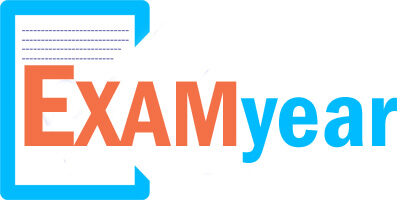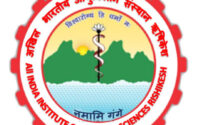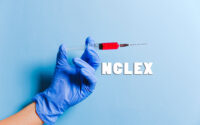Mental Health Nursing Questions and Answers
Mental Health Nursing Questions and Answers Papers are available in our page. However, to help the aspirants in getting their dream jobs we have given the direct download link for the Health Education Systems Incorporated Previous Year Question Paper Pdf on Mental Health Nursing in the section below.
We advise the applicants who are in search of Mental Health Nursing ANCC Question Paper to refer the syllabus and exam pattern details. Where checking the syllabus before going to Model Paper gives the candidates an overview on Health Education Systems Incorporated examination.
Here is the Mental Health Nursing American Nurses Credentialing Center Exam Pattern details. Psychiatric Mental Health Nurse Practitioner Question Paper with Answers on Mental Health Nursing are given in the section following. Practice more and score good marks in the Mental Health Nursing for PMHNP examination.
Aspirants can find free downloading for Topic wise Mental Health Questions and Answers. Applicants can just click on those American Nurses Credentialing Center Sample Papers on Mental Health Nursing and practice them to get a good score.
Therefore You can also visit or site to get more Mental Health Nursing Questions and Answers for American Nurses Credentialing Center and CAN Sample Question Papers. The applicants who are searching for the Mental Health Nursing Questions and Answers for Health Education Systems Incorporated Question Papers reached the right page.
You can get all the Previous Year Question Papers of PMHNP here. Hence, applicants can download the PMHNP Model Papers on Mental Health Nursing Questions and Answers pdf from the below free downloading links. By practicing the last year papers of Certified Nursing Assistant, the candidates will understand how to manage time in the examination.
Model Question on Mental Health Nursing
1. When a nurse develops feelings toward a client that are based on the nurse’s past experience, it is called______
(a) Countertransference
(b) Role reversal
(c) Transference
(d) Unconditional regard
2. The nurse would expect to see all the following symptoms in a child with ADHD except
(a) Easily distracted and forgetful
(b) Excessive running, climbing, and fidgeting
(c) Moody, sullen, and pouting behavior
(d) Interrupts others and can’t take turns
3. Which of the following is normal adolescent behavior?
(a) Critical of self and others
(b) Defiant, negative, and depressed behavior
(c) Frequent hypochondriacal complaints
(d) Unwillingness to assume greater autonomy
4. Which of the following is used to treat enuresis?
(a) Imipramine (Tofranil)
(b) Methylphenidate (Ritalin)
(c) Olanzapine (Zyprexa)
(d) Risperidone (Risperdal)
5. The nurse recognizes which of the following as a common behavioral sign of autism?
(a) Clinging behavior toward parents
(b) Creative imaginative play with peers
(c) Early language development
(d) Indifference to being hugged or held
6. When assessing a client with anxiety, the nurse’s questions should be
(a) Avoided until the anxiety is gone
(b) Open ended
(c) Postponed until the client volunteers information
(d) Specific and direct
7. The best goal for a client learning a relaxation technique is that the client will
(a) Confront the source of anxiety directly
(b) Experience anxiety without feeling overwhelmed
(c) Report no episodes of anxiety
(d) Suppress anxious feelings
8. Thought-stopping technique is developed by ___________to eliminate and intrusive unwanted thoughts.
(a) Egen Bluler
(b) Simund Freud
(c) Joseph Wolpe
(d) Thomas Schnider
9. According to Albert and Emmons, the seven behavioral components of assertive behavior all, EXCEPT
(a) Eye contact
(b) Posture
(c) Physical contact
(d) Perception
10. The characteristic of Non assertive behavior is _____________
(a) Violate the other rights to fulfill their wish
(b) Express their view and wish without violating other rights and privileges
(c) Denying their own rights and pleasing others
(d) They always focus on achieving their own goals than others
11. Among the following psychiatric illness, the client is most likely to have insight in ________
(a) Paranoid Schizophrenia
(b) Delusional disorder
(c) Paranoid personality disorder
(d) Involutional melancholia
12. Among the following, which one considered as positive symptom of schizophrenia?
(a) Inappropriate affect
(b) Delusion
(c) Withdrawl
(d) Loosening of associations
13. ‘Dramatic self mutilation” occur during acute phase of schizophrenia is known as ______
(a) Capgras syndrome
(b) Metabolic syndrome
(c) Schizotypical syndrome
(d) Van Gough syndrome
14. Mutism,stupor and posturing suggestive of ________
(a) Retarded catatonia
(b) Catatonic excitement
(c) Hebephrenic schizophrenia
(d) Simple schizopherenia
15. A client is diagnosed with alcoholic dementia. What nursing intervention is appropriate for this client’s nursing diagnosis of altered sensory perception?
(a) Assess vital signs
(b) Decrease environmental stimuli
(c) Maintain a nonjudgmental approach
(d) Empathetically confront denial
16. Which intervention is a nurse’s priority when working with a client suspected of having a conversion disorder?
(a) Avoid situations in which secondary gains may occur
(b) Confront the client with the fact that anxiety is the cause of physical symptoms
(c) Teach the client alternative coping skills to use during times of stress
(d) Monitor assessments, lab reports to rule out organic pathology
17. A nurse is assessing a client in the mental health clinic. For 3 weeks, the client has been exhibiting eccentric behaviors with blunted affect. There is impairment in the client’s role functioning. These symptoms are reflective of which phase in the development of schizophrenia?
(a) Phase I—schizoid personality
(b) Phase II—prodromal phase
(c) Phase III—schizophrenia
(d) Phase IV—residual phase
18. Schneider’s first rank symptoms of schizophrenia (FRS or SFRS) do NOT describe _______
(a) Made impulse
(b) Thought insertion
(c) Made act
(d) Illogical thinking
19. Pin point pupils suggestive of ______
(a) Opioid overdose
(b) Cannabis overdose
(c) Cocaine overdose
(d) LSD overdose
20. The drug which used to prevent withdrawal symptoms of client who is suffering from acute intoxication of opioid (Morphine) is ______
(a) Clonidine
(b) Naltrexone
(c) Diazepam
(d) Disulfiron
21. Wernicke’s encephalopathy is a deficiency of ______,which occur in chronic alcoholic patient.
(a) Riboflavin
(b) Niacin
(c) Thiamine
(d) Pyridoxine
22. Dipsomania refers to _______
(a) Obsession to drink alcohol
(b) Compulsion to drink alcohol
(c) Ecstasy of hallucinogens
(d) Hypomania
23. Organic amnestic syndrome is characterised by the following clinical features all, EXCEPT____:
(a) Impairment of memory
(b) No disturbance of consciousness
(c) Disturbance in intelligence
(d) Disturbance in personality
24. Among the following, which one drug acts as “Cholinesterase inhibitor” used for cognitive impairement?
(a) Mirtazapine
(b) Temazepam
(c) Paroxetine
(d) Tacrine
25. The major difference between dementia and pseudodementia is _____
(a) Judgment
(b) Disorientation
(c) Intelligence
(d) Abstract thinking
26. The nurse is planning care for a client with a long history of cocaine abuse who has recently been admitted to the substance abuse unit. The nurse intentionally keeps the treatment plan simple. What is the underlying rationale for this decision?
(a) The client would be unable to focus because of the use of denial
(b) The client is at high risk for mild to moderate cognitive problems
(c) Physical complications would impede learning
(d) The client has arrested in developmental progression
27. Which of the following ego defense mechanisms describe the underlying dynamics of somatization disorder?
(a) Repression of anger
(b) Suppression of grief
(c) Denial of depression
(d) Preoccupation with pain
28. Which of the following nursing diagnoses is most appropriate for the disorder known as hypochondriasis?
(a) High risk for injury
(b) Anticipatory grieving
(c) Self-esteem disturbance
(d) Diversional activity deficit
29. Which of the following nursing interventions is appropriate for a client diagnosed with hypochondriasis?
(a) Teach the client adaptive coping strategies
(b) Help the client eliminate the stress in her life
(c) Confront the client with the statement, “it’s all in your head”
(d) Encourage the client to focus on identification of physical symptoms
30. Which of the following pharmacologic agents is a sedative-hypnotic medication used to induce sleep for clients experiencing a sleep disorder
(a) Triazolam (Halcion)
(b) Paroxetine (Paxil)
(c) Fluoxetine (Prozac)
(d) Risperidone (Risperdal)
31. Which of the following conditions characterizes rapid-eye-movement (REM) sleep?
(a) Disorientation and disorganized thinking
(b) Jerky limb movements and position changes
(c) Pulse slowed by 5 to 10 beats/minute
(d) Highly active brain and physiological activity level
32. A client with sleep terror disorder might have autonomic signs of intense anxiety. Which of the following autonomic signs and symptoms should the nurse monitor?
(a) Tachycardia
(b) Pupil constriction
(c) Cool, clammy skin
(d) Decreased muscle tone
33. A client diagnosed with a sleep disorder awakens abruptly with a piercing scream. Which of the following disorders best explains the behavior?
(a) Hypersomnia
(b) Nightmare disorder
(c) Sleep terror disorder
(d) Sleepwalking
34. Which of the following substances is a natural hormone produced by the pineal gland that induces sleep?
(a) Amphetamind
(b) Melatonin
(c) Methylphenidate
(d) Pemoline
35. Which of the following statements is correct about conversion disorders?
(a) The symptoms can be controlled
(b) The psychological conflict is repressed
(c) The client is aware of the psychological conflict
(d) The client shouldn’t be made aware of the conflicts underlying the symptoms
36. Which of the following nursing diagnoses is appropriate for a client with conversion disorder who has little energy to expend on activities or interactions with friends?
(a) Decisional conflict
(b) Hopelessness
(c) Impaired social interaction
(d) Ineffective family coping
37. Which of the following nursing interventions is the most appropriate for a client who had pseudoseizures and is diagnosed with conversion disorder?
(a) Explain that the pseudoseizures are imaginary
(b) Promote dependence so that unfilled dependency needs are met
(c) Encourage the client to discuss his feelings about the pseudoseizures
(d) Promote independence and withdraw attention from the pseudoseizures


